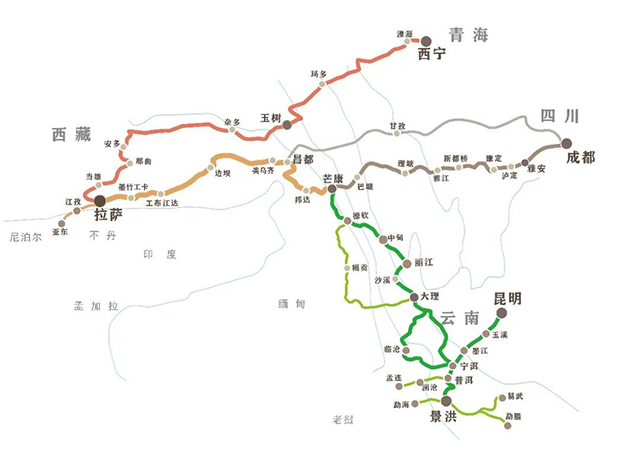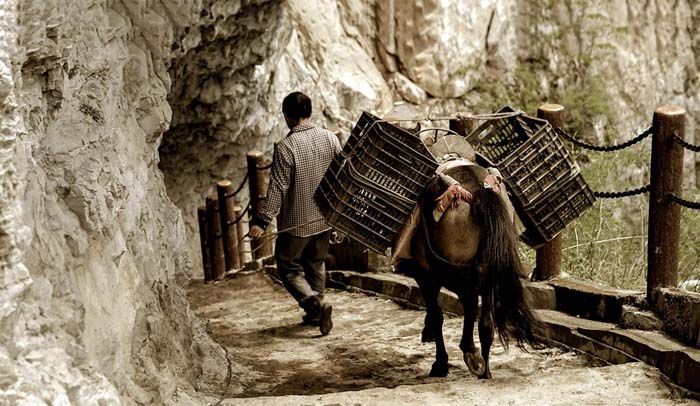Hop on a caravan, as we take you through a winding network of historic tea trade routes.
What is the Tea Horse Road?
The Tea Horse Road, or Chá Mǎ Gǔ Dào (茶马古道), was an ancient trade network that connected the tea-growing regions of Yunnan, Sichuan, and Guizhou with the Tibetan Plateau and beyond.
But this route moved much more than goods. It carried language, customs, and the essence of cultures across some of the most remote terrains on Earth — from subtropical forests to snow-capped peaks.
A Route Carved by Tea
The trail began in the tea heartlands of Pu'er (Yunnan) and Ya’an (Sichuan), where tea was pressed into dense, transportable bricks. Caravans of porters and horses would wind their way up the mountains, crossing rivers and surviving harsh climates to deliver tea to Tibetan monasteries and nomads, where it was valued as both medicine and daily staple.
Along the way, this journey would take them through:
- Lijiang, home to the Naxi people, where cobbled streets echo with the footsteps of ancient traders
- Shangri-La, a highland town once known as Zhongdian, sitting on the fringe of Tibet
- Batang and Chamdo, Tibetan towns where cultures merged and goods changed hands
The full route could stretch over 4,000 kilometers, taking months to complete.
 Source: iPucha
Source: iPucha
More Than Trade: A Cultural Conduit
The Tea Horse Road wasn’t just a logistics path — it was a cultural artery.
Tibetan herders adopted tea as an essential daily drink, often churned into butter tea (po cha) to provide warmth and energy in high altitudes. Chinese traders, in turn, brought back not just horses, but ideas, crafts, and religious influences. Temples, tea houses, and inns blossomed along the trail, some of which still stand today.
Even certain teas — like Pu’er — owe their unique fermented character to the long journeys and aging processes they underwent during these treks.
The Legacy Today
While the caravans have long disappeared, the spirit of the Tea Horse Road remains.
You’ll find it in the rich, earthy profile of aged teas, the enduring relationships between ethnic communities in the highlands, and in modern efforts to preserve this living heritage. In places like Lijiang and Dali, old tea inns now house cultural museums or quiet tea rooms that nod to their storied past.
At Teahills, we honour this history with every tea we choose — many still grown in the very hills once traversed by these early traders.
Final Thoughts
The Tea Horse Road is a reminder that tea is not just a drink — it’s a journey. One shaped by people, place, and purpose. From misty tea farms to the cups we sip today, each brew carries traces of this long passage through time.
Ready to taste the story of the tea hills?
Shop our collection now.


0 comments